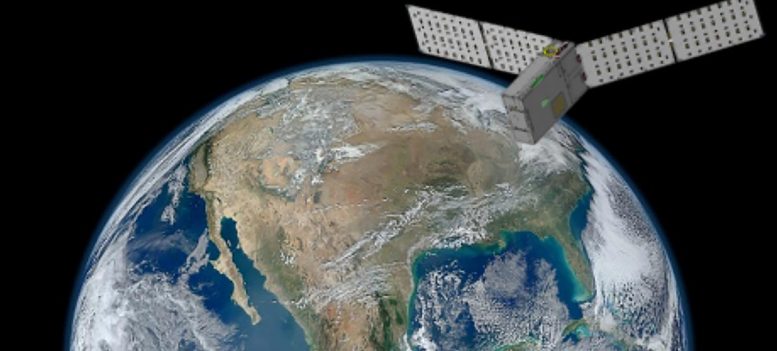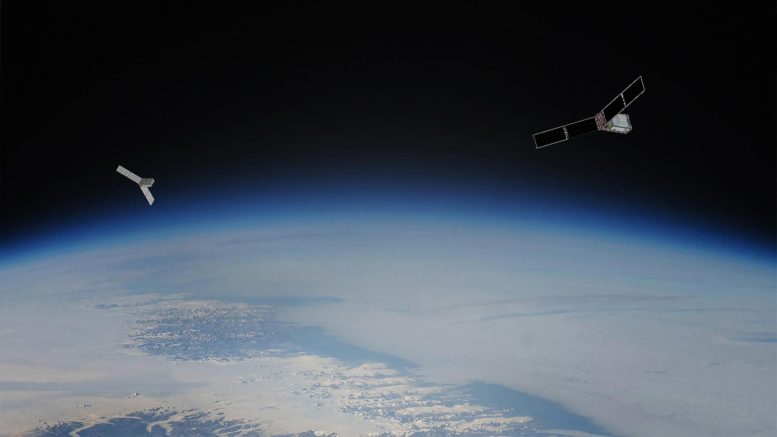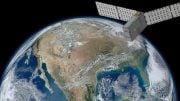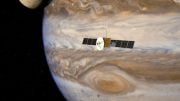
NASA’s PREFIRE mission, in collaboration with Rocket Lab, aims to study heat loss from Earth’s polar regions using CubeSats. Scheduled to launch in May 2024 from New Zealand, this mission seeks to fill crucial gaps in our understanding of the polar regions’ role in Earth’s heat balance, impacting global climate patterns and sea level predictions. Credit: NASA
Data from NASA’s PREFIRE mission will improve our understanding of how the Arctic and Antarctic help to regulate Earth’s climate, the mechanisms of polar ice loss, and related issues of sea level rise and sea ice loss.
NASA and Rocket Lab are targeting no earlier than Wednesday, May 22, 2024, for the first of two launches of the agency’s PREFIRE (Polar Radiant Energy in the Far-InfraRed Experiment) mission to study heat loss to space in Earth’s polar regions. For the PREFIRE mission, two CubeSats will launch on two different flights aboard the company’s Electron rockets from Launch Complex 1 in Māhia, New Zealand. Each launch will carry one satellite.
NASA’s PREFIRE mission will fill a gap in our understanding of how much of Earth’s heat is lost to space from the polar regions. By capturing measurements over the poles that can only be gathered from space, PREFIRE will enable researchers to systematically study the planet’s heat emissions in the far-infrared — with 10 times finer wavelength resolution than any previous sensor.

PREFIRE’s two small satellites – shown in an artist’s concept orbiting Earth – will measure the amount of heat radiated into space by the planet’s polar regions. Data from the mission will inform climate and ice models. Credit: NASA/JPL-Caltech
The Arctic and Antarctic help regulate Earth’s climate by radiating heat initially absorbed at the tropics back into space. But for regions like the Arctic, the spectrum of 60% of the energy escaping to space hasn’t been systematically measured. Filling in this picture is important for understanding which parts of the polar environment are responsible for heat loss and why the Arctic has warmed more than 2.5 times faster than the rest of the planet. In addition to helping us understand how the poles serve as Earth’s thermostat, PREFIRE observations of this heat exchange can improve our understanding of the mechanisms of polar ice loss and related questions of sea level rise and sea ice loss.
The instruments will fly on two identical CubeSats — one instrument per CubeSat — in asynchronous, near-polar orbits.
NASA and the University of Wisconsin-Madison jointly developed the PREFIRE mission. The agency’s Jet Propulsion Laboratory, located in Southern California, manages the mission for NASA’s Science Mission Directorate and provided the spectrometers. Blue Canyon Technologies built the CubeSats, and the University of Wisconsin-Madison will process the collected data.
The launch, which Rocket Lab named “Ready, Aim, PREFIRE,” will be followed by a second CubeSat mission launch several weeks later. The second launch, which the company calls “PREFIRE and Ice,” will also lift off from New Zealand on an Electron rocket. NASA’s Launch Services Program selected Rocket Lab to launch both spacecraft as part of the agency’s VADR (Venture-class Acquisition of Dedicated and Rideshare) contract.









Why did they forget the earth? All the secrets of humans are in the earth, but humans looked at the sky and forgot the earth. Everything is hidden under thousands of meters of soil. Who changed the continents, islands and lakes? Why are the statues and inscriptions You will not dig out the thirty thousand years of history that belonged to the thirty thousand years of civilization of humans who lived with dinosaurs. Humans are so involved in the earth and life that they do not think about the earth’s interior. A naked woman was formed tens of millions of years ago
islands are exactly in the shape of rolling dinosaurs, which 100% worked on the islands of humans for tens of thousands of years. They created these islands with tools or machines in the form of dinosaurs that were rolling or fighting and fleeing because of the events that happened. The tools used to move the soil of the continents and islands and dig the ground to create a sea like the Red Sea, etc., are hidden under two or three thousand meters of soil, under the cities of all the continents, we mean that 100% under and in the center of all The big cities and the capitals of all countries exist under two or three thousand meters underground. I saw more than ten times in my dreams that under the cities of Tehran and Shahr Ray, which is one of the very old cities in Iran, there are electric trams going under the city. I used to go to Ray and Tehran and under three thousand meters underground there were square gold statues that were in the shape of dinosaurs that were in the Philippines and Papua New Guinea and I asked which city these statues belonged to, they said they lived in the Philippines
You must help me to come to America and reveal the book that was revealed to me and the pictures and videos that I took from the clouds and that God or Satan created for me. I must definitely come to Canada or America and I must I will reveal the book and eight surahs that are connected to the time of its words, and Surah Syarat, which is the seventh surah, refers to the seven heavens, and space, which I will type two verses for you in Persian alphabet
Thank You admins
Hello, I have read the contents of this page. I am asking the managers, programmers and great scientists of NASA to spend one hundredth of the huge expenses that are spent on sending research satellites for the polar weather of the earth, to spend a little on digging the earth. They should go down to the depth of two or three thousand meters of the earth in the capitals of the countries and in the bed below the big and important cities, exactly the same amount as the oil, and dig next to and around the big cities and diagonally down. and go underground to dig at a depth of three thousand meters below and in the middle of the bed of big cities to a depth of three thousand meters, so much so that they reach the urban fabric or advanced machines or human tools that in the past, with those human machines in ten Millions of years ago, they used to move the soil and create changes in the continents. Humans whose lives were destroyed by the impact of meteorites, but the works they created are still left in the Philippine Islands, which are exactly the shape of a dinosaur. which was poured from the planets of the Milky Way, which later disintegrated, on the entire planet Earth, and the ocean water rose several thousand meters, and the dinosaurs that were created by the people who lived on these islands and worked for thousands of years with tools and machines until They created such a big dinosaur by raising the soil of the Philippine islands, the baby dinosaur, but when several thousand meters of soil were poured over the entire ocean, several thousand meters of ocean water rose and the dinosaur they had created and worked for several thousand years on the Philippine island that Everything was connected and went under the water and the Philippine Islands were formed, but it is clear that these islands were one hand and one piece at the time when the image of the baby dinosaur with all the soil that was poured to make the shape of the dinosaur in the entire Philippine island can be seen from space. And humans must have mapped from space, geological engineers and architects to make the map of the Philippines island exactly in the shape of a dinosaur, they who lived on earth to create the American continent, the African continent, Asia, the black lakes of the Aegean, the Mediterranean, Mazandaran, the Persian Gulf, and The Amazon, which is the eye of the rhinoceros, worked for at least tens of thousands of years with machines and cargo planes to create these shapes in the shape of four ends, South America in the shape of a tribal chief, the seas in the shape of a woman and a mermaid, and Mazander in the shape of a fetus in the stomach. The mother of North America was raised in the form of a bird that handed over the thieves in its mouth to the police, and the right hand of the American police is known to have handcuffed the two hands of the thief, and the thief has fallen to the ground
In the lower jaw of the dinosaur bird or Simorgh, the bird that cooperated with the police and was also a thief in the continent of Africa, the head of a rhinoceros is clearly visible in the entire map of the continent of Africa and the horn of a rhinoceros is on his forehead, which is known as the horn of Africa that formed the country of Somalia. The map of the country of Somalia is in the form of an arrow, which is led by God, its borders and formation are known, and the name of Somalia was determined by God, but those who do not think about these issues, maybe you are not the only ones who easily ignore this important issue. They are rejected and this has caused us resentment. I explained precisely that the hand of an Arab and a black man, whose hand is a machete, which is known in the Red Sea, the Strait of Yemen, and the Arabian Sea, and his hand in the Red Sea and the Ocean is known to be a machete. He has in his hand, as I explained, his machete is the Red Sea, and he wounds the head and neck of the rhinoceros, and the head and chest of the camel, and he takes it to sell the expensive horn of the rhinoceros with expensive elephant tusks and escape to Rome and Europe with the camels. Go and make love with the girls and women of Europe. You must know these thieves of caravans and caravans, that at this time when God revealed to me the Surah and the Book, at the same time, these black and Arab thieves and hunters are smuggling rhinoceros horns and elephant tusks. Arabs and blacks in countries where the role of elephants, camels and rhinos is known in these Arab and African countries. Look at the world map and you will find out many secrets of earthlings. In addition to the secrets we have discovered, you, dear manager, can also discover other secrets if you are experienced and a world traveler. I have been watching the imams of cities and countries for twenty years, and this matter is 100% the will of God, who made me the guardian and master of time. In order for a revolution to take place in the world, in America, site managers don’t send us SMS and don’t communicate with the sites’ contacts? I have a lot of secrets, but I won’t tell you to do what I say, but… it continues